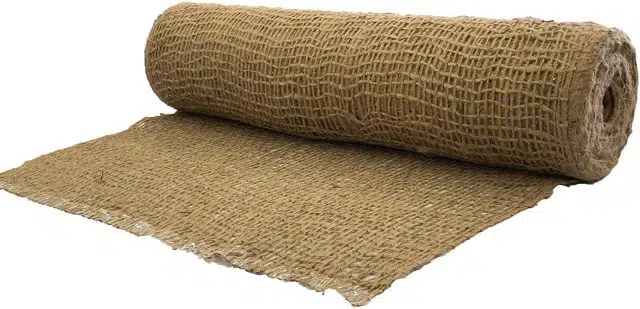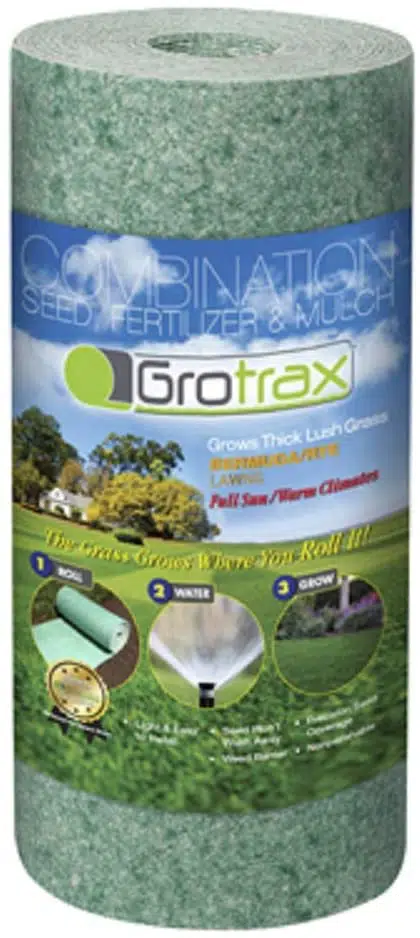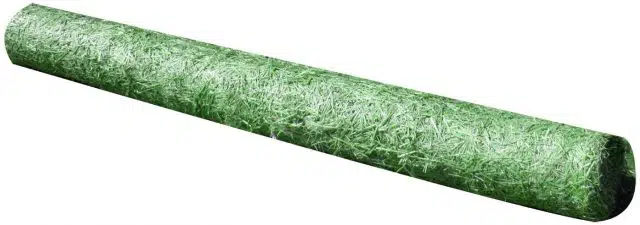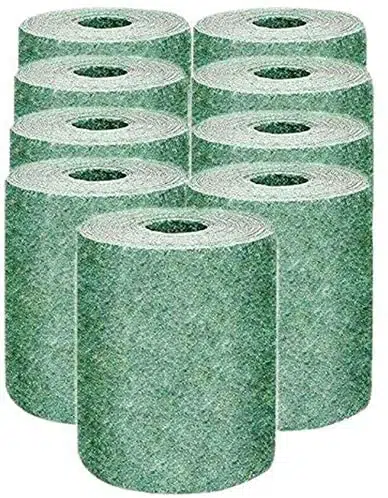Are you looking for an easy and fast way to control erosion? Using an erosion control blanket is certainly an effective option. Read on to see some of the best products in the market.
One of the major environmental challenges facing the world today is erosion. It is caused by natural factors such as rain, wind, and other climate-related reasons. However, today, human activities such as construction, irrigation, and mining have also exacerbated the problem.
And with these activities increasing by the day, erosion will only worsen unless a solution is found. One of the most effective solutions to this problem is erosion control blankets.
Erosion control blankets are made of either organic or synthetic materials or even a combination of the two. Some of the organic materials include coconut fiber, wood excelsior, and straw. The synthetic materials, on the other hand, are polypropylene and other synthetic fibers.
Best-Of by Category
| Category | Product |
|---|---|
| Best for Cost-Efficiency | Coconut Erosion Control Blanket |
| Best for Versatility | Erosion Control Blanket With Grass Seeds |
| Best for Ease of Use | Biodegradable Erosion Blanket |
| Best for Environmental Consciousness | Permanent Erosion Control Blanket |
Areas of Application
Erosion control blankets are used to cover open land, thus providing soil stability and preventing erosion.
They also support the growth of new vegetation that helps to prevent erosion naturally. They can be used for both commercial and consumer purposes in the following areas;
1. Construction
During construction, a lot of soil is moved, and vegetation is uprooted. This leaves some areas of land bare and exposed to the vagaries of weather. Construction also changes the characteristics of soil, the quality of water, and existing habitats increasing the likelihood of erosion.
2. Mining
Mining activities also strip the land of soil and vegetation. They also interfere with the flow of natural water. This damages the soil structure and creates a lot of loose sediments that are prone to erosion.
3. Restoration of Wetlands
Due to changing climatic conditions, there is a prevalence of heavy rainfall, storms, and floods. As a result, water bodies like rivers, lakes, and even oceans are prone to destructive erosion patterns.
If you combine these with human activities like dam installations, there is a big negative impact on waterways and natural water systems.
Other areas of application include:
- Lining of waterways
- Management of water in high and low-flow channels
- Shoreline restoration
- Stabilization of slopes
- Road ditches
- Establishing grass and wildflowers
Benefits of Erosion Control Blankets
So what are the benefits of using erosion control blankets compared to other methods of combating erosion?
1. Cost-efficient
As we mentioned earlier, erosion control blankets are more cost-effective than most other methods. These blankets are relatively cheap to assemble and build. The installation process is also easy.
2. Versatile
Erosion control blankets can be used for multiple purposes and not just erosion control. For example, they simplify the process of landscaping and planting of new vegetation.
3. Easy to Use
You do not need technical expertise to set up and maintain erosion control blankets. The process is as simple as rolling them out and covering the desired areas. They can also be carried easily from one location to another.
4. Environmentally Friendly
Erosion control blankets have little to no negative impact on the environment. They usually disintegrate over time and become part of the soil structure.
The Best Erosion Control Blankets
There are different varieties of erosion control blankets. This depends on factors like the purpose of the blanket and the material used to make it. Some are made using organic materials, while others are made of synthetic fibers or even both.
They are also different in that some are biodegradable, while others are photodegradable. Other erosion control blankets are permanent or take very long to break down.
Standard blankets measure 75 square yards in size. And since they are designed to fit into their environments, the most available ones are tan or green erosion control blankets.
Below is a guide on the best erosion control blankets.
1. Coconut Erosion Control Blanket
A coconut blanket is also known as a coir blanket. It is usually made of coconut fiber -a material that is sturdy, durable, and biodegradable. The outer layer of the blanket is reinforced with double-net fibers to make it tougher and enhance longevity.
Some blankets have additional reinforcements using temporary straws and durable coir netting. This makes them good not just for erosion control but also for temporary soil stabilization as the vegetation takes root.
The netting is stitched from the top to the bottom sides using coconut fibers. The material used for the netting and stitches is different depending on the durability and purpose of the coconut blankets. For example, short-term and sensitive applications, are made using biodegradable materials.
You won’t need to remove anything from the soil because the blanket will just disintegrate and mix with the soil. The plastic nettings also start disintegrating under sunlight later.
But for long-term, heavy-duty use, the netting and stitches are manufactured using heavy-duty materials like synthetic fibers. They also have UV protection to offer protection from sun damage. This means they can last even longer.
Most can perform well for at least 2 years before they start biodegrading. Thus, they are reliable, effective, and environmentally friendly.
Because they can conform to any soil contour, coconut erosion blankets should ideally be used in areas with heavy flow and steep slopes. You can install them along river banks, canals, and in any other wetlands restoration projects.
See Related: Environmental Conservation
2. Erosion Control Blanket With Grass Seeds
An erosion control blanket with grass seed is perfect for anyone who wants a grass lawn without the hustle of planting the grass themselves. It saves you the trouble of preparing the land, choosing seeds, and going through the process of planting and maintenance.
Grass-seeded blankets come with carefully selected grass seeds that are already covered in a bit of soil and manure. You only need to roll it out and lay it down on the area you want to cover. The blanket protects the seeds from slipping away during irrigation or under the rain.
There are different varieties of grass seeds to choose from. So choose one that is appropriate for your area depending on the environmental and climatic conditions.
The grass seeds are also weed-free, so you do not have to worry about bugs or pesticides. Your work is just to water and, within no time, you will have yourself a magnificent grass carpet.
These blankets also have granular fertilizers, which help to accelerate germination and growth. The rate of germination of grass seeds is better than traditional direct seeding.
Erosion control blankets with grass seeds are made of natural and fully biodegradable materials. The material is thick and slightly elastic. And although the blanket is light, it sticks perfectly to the soil.
It is ideal for both consumer and commercial uses. You can use it to
- Reinforce steep slopes
- Reclamation of canals and pond banks
- Establishing roof gardens
3. Biodegradable Erosion Blanket
This is a blanket that is manufactured using organic materials like straw and coconut fiber. Usually, these materials disintegrate into the soil and become part of the soil structure. You do not need to remove anything.
Those biodegradable blankets meant for heavy-duty uses are usually reinforced with synthetic fibers. The time it takes for the blankets to decompose differs depending on the composition of the materials. But typically, most of them will last between one and three years.
Unlike polypropylene erosion blankets, biodegradable ones do not need exposure to direct sunlight for degradation to take place. So you can use them in any climatic environment.
Biodegradable erosion blankets are easy to plant through. They also offer greater water absorption compared to plastic blankets. And because of their porous nature, biodegradable blankets have better erosion control and soil adherence capabilities.
You can even use the blankets as mulch for your plants, which isn’t possible with other types of plastic blankets. These features are ideal when you are trying to establish vegetation.
Because they are biodegradable, the blankets are ideal for sensitive areas where the preservation of the natural environment is key. You can use them not just for erosion control and soil stabilization but also for establishing vegetation cover in a way that is friendly to the environment.
Some of these sensitive areas include wetlands like riverbanks and seasides. You can also use them to control erosion in moderate slopes and low-flow channels.
4. Permanent Erosion Control Blanket
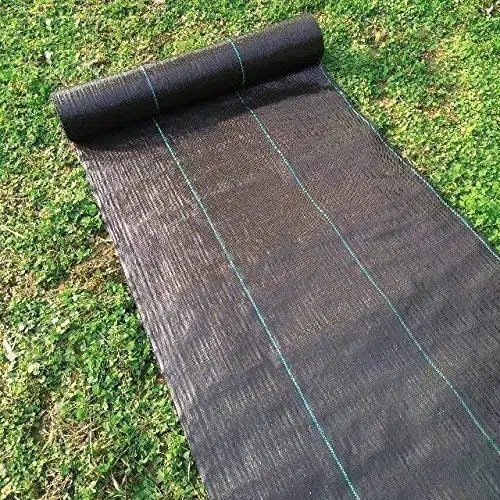
A permanent erosion control blanket is designed not to decompose at all. It is therefore made of non-biodegradable materials like synthetic fibers, netting, stitching, and wire mesh. It can be used for heavy-duty purposes and last for a very long time.
In some cases, the blanket may have additional biodegradable materials like straw or wood. These organic materials offer better erosion protection as well as an optimum environment for the establishment of vegetation. These blankets will also help to stabilize the soil, protect the landscape, and promote the growth of vegetative cover.
Permanent erosion blankets are more rigid compared to biodegradable blankets. This means they are ideal for sites that need extra reinforcement and stabilization of soil.
They are also very effective in areas without vegetation and those that are prone to hurricanes or storms. Why? Because these blankets can control the impact of wind and water.
They can be used for residential or consumer purposes. But they are typically recommended for commercial uses where demand for heavy-duty applications is high. They can perform well in areas with strong erosive forces like steep slopes, shorelines, the banks of rivers and streams, high-flow water channels, and runoff water systems.
Other heavy-duty uses include;
- Structural backfills
- The inlets and outlets of pipes and other water channels
- Maintenance access areas
5. Erosion Control Blanket for Steep Slopes
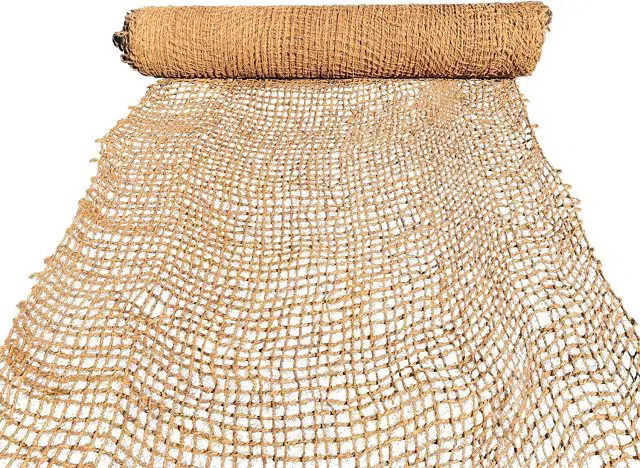
Have you been experiencing run-away erosion on slopes? It is time to get an erosion control blanket for steep slopes before things get out of hand.
These erosion blankets for steep slopes are designed using heavy-duty materials like synthetic fiber and wire mesh. They are then stitched together using fiber mesh.
The blanket has very strong fibers that firmly hold soil and protect it from being washed away. Also, the inside has a mesh that makes it easy for plants to pass through it as they germinate.
Because of the quality of the materials, these blankets usually take a very long time to break down. Most last for a few years, giving the vegetation in the ground time to grow and form vegetative cover.
The new vegetation starts playing the role of erosion control when the blankets have decomposed. Some of them come pre-seeded and even have organic nutrients to enhance the growth of vegetation.
These blankets are just as easy to install as the rest. But because of gravity and highly erosive forces, they have to be well-secured using landscape staples. This protects the blankets from being washed or blown away.
These erosion control blankets are also designed to prevent erosion and support the establishment of vegetation in slopes. They are also effective in other areas where water and vegetation management is difficult such as river banks, lakes edgings, and shorelines.
6. High-Velocity Erosion Control Blanket
High-velocity erosion blankets are made to withstand high levels of velocity. They are manufactured using a combination of both natural and synthetic materials for the best performance. They are also UV-treated for stability and longevity.
These blankets have a special design owing to their unique role. For example, the blankets have a uniform web of many interlocking fibers with net stitches. These fibers have the same degree of thickness throughout the blanket and are uniformly distributed throughout the entire blanket.
In addition, the blanket has pores that are wide enough to allow vegetation to grow but narrow enough not to allow soil sediments to pass through.
The main purpose of the blanket is to prevent runoff from getting out of control and causing environmental damage. It helps to reduce flow velocity and to prevent the crusting of the soil surface.
Apart from preventing erosion, high-velocity blankets also regulate soil temperatures and provide a conducive environment for the germination of plant cover.
For the best results, ensure the blanket is laid parallel to the flow of water to prevent it from being washed away. The blanket should also be fastened using staples for extra support.
These erosion control blankets are the go-to blankets in high-velocity environments. They can be used both commercially and for consumer reasons. This includes wetlands restoration, mining, and even renewable energy projects like hydro-power sites.
They also perform well in protecting coastlines, riverbanks, landfills, and other major water bodies.
See related: Don’t Read This If You Think Climate Change is Fake
7. Heavy-Duty Erosion Control Blanket
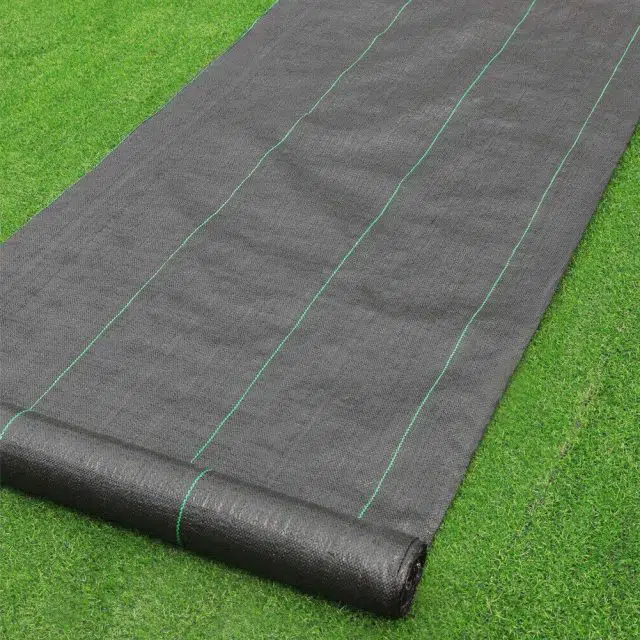
Heavy-duty blankets are designed not just to be long lasting, but also to be strong enough to withstand all kinds of stress. They are therefore made using the finest and toughest quality materials.
This blanket has well-built fibers that expand and interlock to come up with a strong matrix. The fibers are UV treated and stitched between two heavy-duty plastic nets. Also, the plastic netting extends outside on both sides of the blanket for extra thickness.
This interwoven network of fibers also makes it possible for the blanket to adhere closely to the ground. As the water passes through the curled fiber material, it is significantly slowed down to the speed of gravitational pull. And as it moves slowly through the blanket, moisture forms and seeps into the soil.
This provides a conducive environment for germination and the speedy growth of vegetation. In addition, the blanket is designed to provide immediate erosion protection.
It can also offer long-term stabilization in very severe slopes and high-flow channels. Additionally, it performs well in high-wind areas and wetlands.
The heavy-duty erosion control blanket is strong enough to withstand the most difficult erosion control challenges. Usually, these are areas where the water flow exceeds the capability and service life of regular biodegradable blankets.
The most common areas of application for heavy-duty control blankets include:
- Steep slopes
- Spillways
- Culvert and tap inlets and outfalls
- Lake edgings and riverbanks
8. Erosion Control Blankets With Seeds
Erosion-prone areas are characterized by two things; loose soil particles and lack of vegetation. Seeded erosion control blankets offer a two-pronged solution to these twin problems.
First, they provide an immediate solution to soil stability by holding the loose particles together. This prevents further erosion. Secondly, they help to establish the vegetation, which becomes a long-term and more sustainable solution to the problem.
Planting vegetation is the most effective way to manage soil erosion. Therefore, wherever there is bare land, the best solution would be to establish vegetation cover.
However, this is a slow process because it requires land preparation, sowing of seeds, and maintenance of the vegetation. Erosion control blankets with seeds help to speed up this process.
There is a wide variety of seeded blankets that you can choose from depending on the site and the kind of vegetation you want on the site. Some manufacturers have even created seed mixes to ensure there is variety. Two of the most common seed varieties are grasses and flowers.
The seeds are usually covered with layers of straw, coconut fibers, or other organic materials. These materials hold the seeds in place. They also insulate the seeds providing optimum conditions for germination and growth.
Erosion control blankets are best for areas that need immediate stabilization. They include new watercourses, steep slopes, waterway banks, and road ditches. They can be used in residential areas as well as for commercial and consumer uses.

